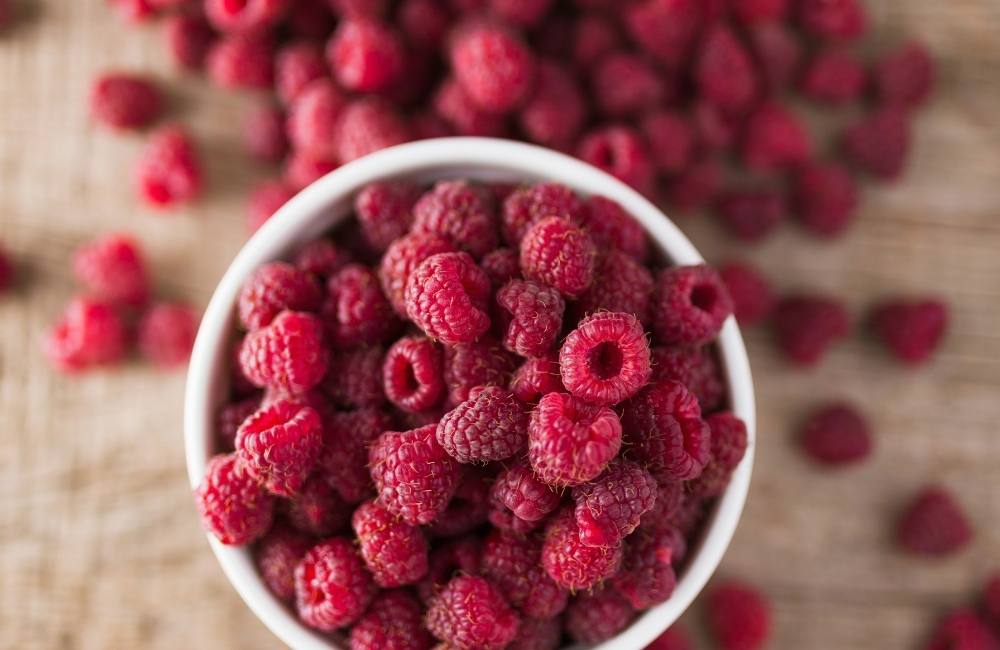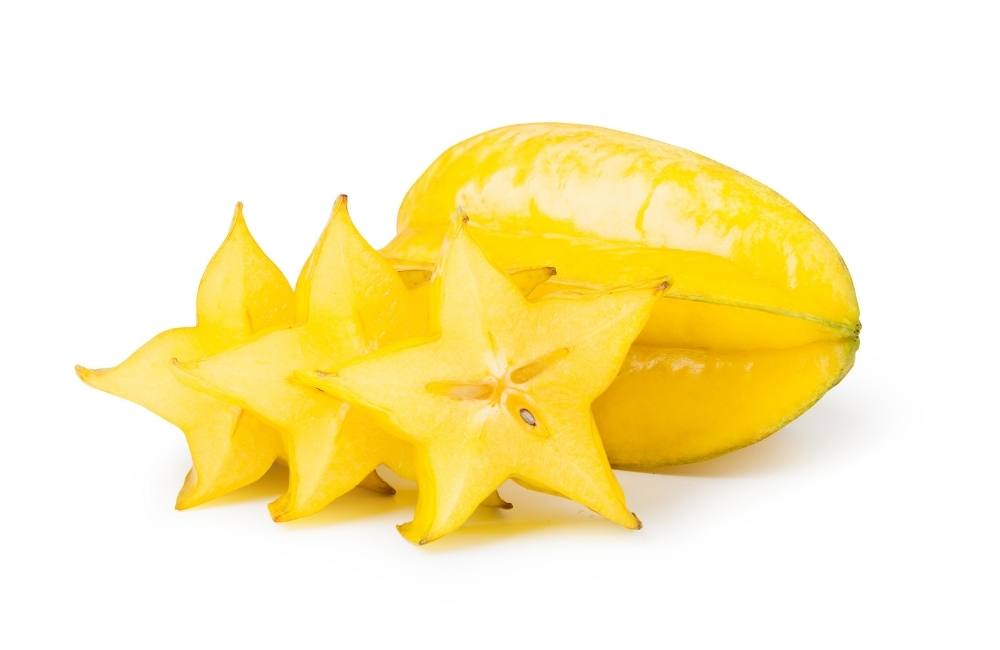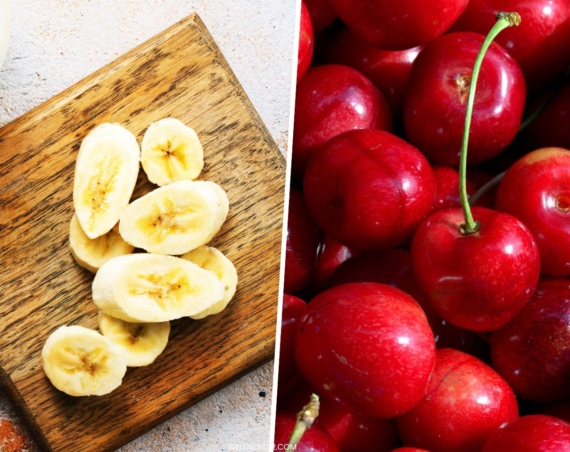
Wondering what low-carb fruits you can eat on a keto diet? You may have even heard the common myth that fruits are banned on keto. This is simply not true.
Fruits are important sources of vitamins, minerals, phytochemicals, and fiber.
It is well-documented that fruits have numerous health benefits and can help reduce the risk of diseases like type 2 diabetes, heart disease, and cancer.
But before digging into the ins and outs of fruit, let’s back up and discuss how fruit acquired its bad rap on a keto diet.
The classic ketogenic diet was designed during the 1920s to help control seizures in children with epilepsy and over time has evolved into a trendy weight loss diet.
On a true ketogenic diet, carbohydrates are severely restricted to 5% of calorie carbs, with the goal of entering the body into a state of ketosis.
Restricting carbohydrates to 5% of calories makes it difficult to squeeze in a serving of fruit.
Fast forward to today and the typical keto diet that most people follow is a modified version that allows for more flexibility with carbs.
A modified keto diet typically aims for less than 50 grams of net carbs per day.
Net carbs in 15 keto fruits
When counting carbs, it is best to focus on net carbs.
This is calculated by subtracting the fiber from the total carbohydrate content because fiber has little to no caloric value in the body.
Fiber has the added benefit of stabilizing blood sugar levels by slowing down digestion.
Here are 15 low-carb, high-fiber keto fruits that can easily fit into a well-planned modified keto diet.
1. Açaí Berries
For their tiny size açaí berries pack a powerful punch of nutrients.
Netting 1 gram of carbs per serving (100 g) and loaded with nutrition, açaí berries are nearly perfect food for a low-carb diet.
This berry has it all —a wide spectrum of nutrients, omega fatty acids, fiber, and antioxidants. Just do a quick google search of “açaí berry low-carb recipes keto” for some great ideas on how to use açaí.
The catch is to make sure the açaí product you buy is unsweetened in order to avoid added sugar.
2. Avocados
Along with unsweetened acai, avocados are a favorite on low-carb meal plans. An entire small-medium avocado (136 g) nets just 2.5 grams of carbs.
This nutrient-dense superfood is packed with vitamins, including vitamins K, C, and B vitamins, minerals, and fiber.
It also contains heart-healthy omega fats. All you need is a knife and a spoon to enjoy this low-carb treat.
3. Lemons
Although lemons are not eaten alone, there are plenty of ways to enjoy this vitamin C-rich, low-carb immune booster.
The easiest way to enjoy this fruit is in a refreshing glass of lemon water. Even if you use an entire lemon (58 g) in your water, you will only have consumed 3 grams of net carbs.
If you use stevia, try adding a few drops to your lemon water to sweeten it up.
4. Black olives
Olives possess both antioxidant and anti-inflammatory properties.
They are rich in heart-healthy fats, which are associated with a lower risk of heart disease.
1-cup (135 g) of olives contains 8 grams of total carbohydrates, with half of that coming from fiber, resulting in a net carb total of just 4 grams.
5. Coconut Meat
This mineral-rich tropical fruit sometimes gets a bad rap for its high saturated fat content. However, plant-based saturated fats are fine in moderation.
One cup (80 g) of shredded coconut contains just 5 g of net carbohydrates and chances are you won’t eat a full cup.
So the next time you have that açaí bowl, sprinkle some coconut shreds on top.
6. Tomatoes
Tomatoes are rich in phytonutrients, including beta-carotene, flavonoids, carotenoids, lycopene, and quercetin.
Grape tomatoes make for an easy grab-and-go snack and at 5 g of net carbohydrates per cup (152 g), they meet the criteria of a low-carb fruit.
7. Star Fruit

Star fruit is an excellent source of immune-boosting vitamin C, antioxidants, and fiber. This low-calorie snack nets just 5 grams of carbs per 1-cup serving (132 g).
For a fun activity at home, you can bake star fruit and create fun star-shaped chips.
8. Blackberries
Noted for their abundance of vitamin C, K, and fiber, blackberries ring in at just 6 g of net carbs per cup (14 g).
The plant compounds that give blackberries their deep rich color are called anthocyanins — powerful pigments that possess several health benefits.
These berries make a quick and easy low-carb snack or a delightful topping on a summer salad.
9. Plums
With a wide spectrum of nutrients and phytochemicals, plums are a fantastic low-calorie, low-carb snack that can satisfy any sweet tooth. 1 plum (66g) nets just 6 grams of carbs.
10. Raspberries
The phytochemicals found in raspberries possess anti-inflammatory properties, which can help protect against several chronic diseases including cancer, heart disease, and type 2 diabetes.
One cup of raspberries nets approximately 6 grams of carbs. For a delicious dessert, top fresh or frozen raspberries with low-carb whipped cream.
11. Strawberries
Rich in vitamin C and just 8 grams of net carbs per cup, strawberries are a nutritious and sweet-satisfying, low-carb snack.
This is another nutrient-packed berry to enjoy with low-carb whipped cream.
12. Watermelon
Satisfy your sweet tooth with a cold, crisp slice of vitamin C-rich watermelon. This sweet treat is packed with hydrating water, nutrients, and phytochemicals.
Next time you crave a frozen treat, simply fill a small bowl with frozen strawberry cubes. Please pay attention to serving size when it comes to watermelon.
It’s easy to quickly consume more than 1-cup (152 g) of diced watermelon, which provides 10 grams of net carbs.
13. Cantaloupe
This sweet, juicy snack is loaded with nutrients, including potassium, vitamins A and C, and powerful antioxidants, like beta-carotene, that offer protection against certain diseases. Cantaloupe provides 11 to 12 g of net carbs per cup (160 g).
14. Honeydew
This hydrating, nutrient-rich melon is an excellent low-calorie fruit choice at 14 grams of net carbs per 1-cup serving (170 g).
With all melons, it is important to stick to the 1-cup serving size or you can quickly exceed your carbohydrate goal.
15. Blueberries
Blueberries offer many nutritional benefits and are packed with fiber, vitamins C and K, several minerals, and phytochemicals.
One cup of blueberries provides about 18 g of net carbs, however, you can easily cut the serving size in half if you are concerned about carbohydrate intake.
Nutrition facts are provided by: Food Data Central. U.S. Department of Agriculture.
Fruits to avoid on a Keto Diet
- All juices (except lime and lemon juice)
- Smoothies
- Dried varieties such as dates, apricots, and raisins
- Fruit candy of any variety
- Canned or jarred fruits with added sugar or syrup
- Although highly nutritious, fruits high in net carbs, such as bananas, mangos, dates, pineapples, peaches, and oranges may be difficult to fit into a very low-carb diet.
What Fruits Can You Eat on Keto?
This really depends on the grams of carbs allowed on your keto meal plan per day. If your goal is 50 grams of net carbs per day, then you can easily enjoy fruit… as long as the fruits are low in net carbs.
The fruits lowest in net carbs per serving are açaí berries, avocados, lemons, limes, olives, coconut meat, tomatoes, star fruit, blackberries, plums, raspberries, and strawberries.
What Is the Lowest Carb Fruit?
After accounting for fiber, açaí berries (unsweetened versions) are the lowest carb fruit with 1 gram of net carbs in one serving (100 grams).
Can I Eat an Apple on Keto?
On a highly restrictive keto diet, it would be difficult to fit even an apple into your carbohydrate allowance. One small apple contains about 17 grams of carbs (net).
However, if you are on a modified keto diet, you can definitely fit in an apple.
A healthy, low-calorie, low-carb way to enjoy an apple is to try topping thinly sliced apples on a salad with mixed greens, nuts, and feta cheese.
Or you can enjoy them with unsweetened nut butter. If you use the equivalent of 1/2 of an apple, then the net carbs are lowered to approximately 8 grams.
How Much Fruit Can You Eat on Keto?
Again, this really depends on your specific carbohydrate allowance.
If you stick with fruits low in net carbs, then you will have more flexibility to fit fruit into your diet (açaí berry, avocados, lemons, limes, olives, coconut meal, tomatoes).
If you eat fruits higher in carb content like watermelon, honeydew, and blueberries, then your fruit servings will be limited to 1 or 2, depending on your carb allowance.
Is a Banana a Carb?
Yes, a banana is considered a carb. A medium banana contains approximately 27 grams of total carbs, 3 grams of fiber, and 24 grams of net carbs.
The carbs in bananas make it tricky to fit into a keto diet. However, if you put a few slices (the equivalent of 1/4 of a banana) on top of cottage cheese for breakfast, then this could fit into your meal plan at 6 grams of net carbs.
The Last Word
Although fruits are sometimes touted as forbidden on a keto diet, there are plenty of low-carb fruits that can easily fit into a well-formulated, modified keto meal plan.
Because fruit contains fiber, which passes through the intestines undigested, you can subtract the fiber content from the total carbohydrate content.
Using net carbs makes it much easier to fit a variety of fruits into your keto meal plan. For example, entire small-medium avocado nets just 2-3 grams of carbs.
It is important to note that a true ketogenic diet is a medical nutrition therapy designed to control seizures and must be overseen by a medical professional or dietitian due to possible adverse events, which include dehydration, and hypoglycemic lethargy, metabolic acidosis, and gastrointestinal symptoms (4).
Also, certain groups of people are advised not to follow a keto diet, including people with type 1 diabetes, pancreatic disease, liver conditions, thyroid problems, eating disorders, gallbladder disease, pregnant or breastfeeding women, and athletes.
Always check with your doctor or dietitian to make sure it is safe for you to start a keto diet.
- Food Data Central. U.S. Department of Agriculture. https://fdc.nal.usda.gov/index.html
- Ludwig, David. “The Ketogenic Diet: Evidence for Optimism but High-Quality Research Needed.” The Journal of Nutrition, vol. 150, no. 6, 2020, pp. 1354–1359. Retrieved June 13, 2020 from https://academic.oup.com/jn/article/150/6/1354/5673196
- Masood, Wajeed, et. al. “Ketogentic Diet.” StatPearls Publishing LLC. 2020. Retrieved June 13, 2020 from https://www.ncbi.nlm.nih.gov/books/NBK499830/
- Meira, Isabella, et. al. “Ketogenic Diet and Epilepsy: What we know so far.” Frontiers in Neuroscience, vol. 13, no. 5, 2019. Retrieved June 14, 2020 from https://www.ncbi.nlm.nih.gov/pmc/articles/PMC6361831/
- Self Nutrition Data. Nutrients in food tool. https://nutritiondata.self.com/tools/nutrient-search
- Yancy, William, et. al. “A Low-Carbohydrate, Ketogenic Diet Versus a Low-Fat Diet to Treat Obesity and Hyperlipidemia: A Randomized, Controlled Trial.” Annals Internal Medicine, vol. 140, no. 10, 2004, pp. 769-777. Retrieved June 13, 2020 from https://pubmed.ncbi.nlm.nih.gov/15148063/
- Volek, Jeff, et. al. “Carbohydrate Restriction Has a More Favorable Impact on the Metabolic Syndrome Than a Low Fat Diet.” Lipids, vol. 44, no. 4, 2009, pp. 297-309. Retrieved June 13, 2020 from https://pubmed.ncbi.nlm.nih.gov/19082851/


